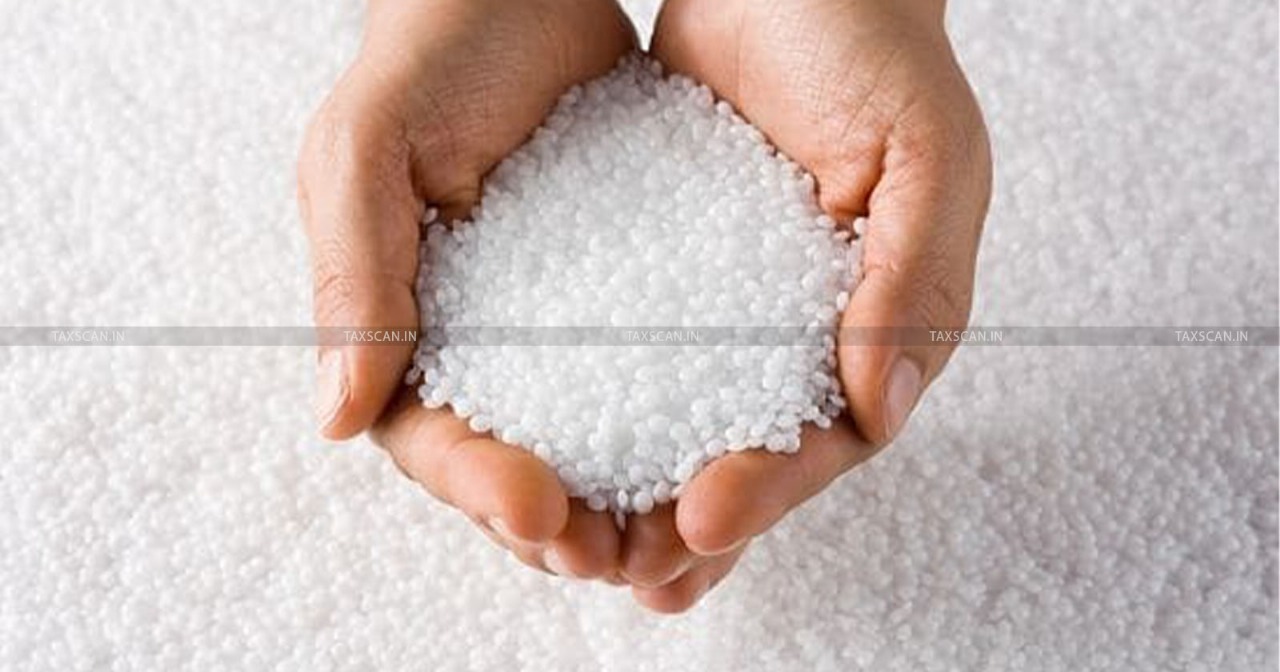Styrene-Butadiene Copolymer to Be Classified as ‘Polymers of Styrene’, Not Synthetic Rubber: CESTAT [Read Order]
CESTAT rules that Styrene-Butadiene Copolymer should be classified as “Polymers of Styrene” under Chapter 3903, allowing customs duty exemption.
![Styrene-Butadiene Copolymer to Be Classified as ‘Polymers of Styrene’, Not Synthetic Rubber: CESTAT [Read Order] Styrene-Butadiene Copolymer to Be Classified as ‘Polymers of Styrene’, Not Synthetic Rubber: CESTAT [Read Order]](https://images.taxscan.in/h-upload/2025/07/11/2062847-cestat-polymers-styrene-taxscan.webp)
The Ahmedabad Bench of the Customs, Excise, and Service Tax Appellate Tribunal (CESTAT) ruled that Styrene-Butadiene Copolymer (SBC) should be classified under “Polymers of Styrene” and not under “Synthetic Rubber” for customs duty purposes.
KLJ Polymers & Chemicals Limited, the appellant, is engaged in importing and trading SBC used in manufacturing processes. The appellant classified the imported SBC under Chapter Heading 3903 as “Polymers of Styrene” and claimed exemption benefits. The customs department issued show cause notices arguing that SBC should be classified under Chapter Heading 4002 as “Synthetic Rubber,” alleging that the appellant wrongly availed customs duty exemptions. The Principal Commissioner confirmed the department’s view, demanding differential duty with interest and proposing penalties, leading the appellant to approach the CESTAT.
Tax Planning For NRIs - CLICK HERE
 Also Read:Affiliation Fees Collected by Universities Not Taxable Under Service Tax, Rental Income Exempt if Within Threshold: CESTAT [Read Order]
Also Read:Affiliation Fees Collected by Universities Not Taxable Under Service Tax, Rental Income Exempt if Within Threshold: CESTAT [Read Order]
The appellant’s counsel argued that SBC with over 70% styrene content should be classified under Chapter 3903, supported by Chapter Note 4 of Chapter 39 and HSN Explanatory Notes, which state that polymers with high styrene content should be classified under “Polymers of Styrene.”
The counsel argued that the product retained thermoplastic properties, could be recycled, and did not meet the elasticity and vulcanisation tests required to qualify as synthetic rubber under Chapter 40. The counsel also argued that the department could not invoke the extended limitation period since the appellant had disclosed all facts during import, and the dispute was interpretational.
The revenue counsel argued that since SBC contained styrene and butadiene, it should fall under “Synthetic Rubber” under Chapter 4002 and referred to a certificate showing the product's elastomeric properties. The revenue argued that the imported goods were specifically used in applications similar to synthetic rubber, making the appellant liable for the differential duty with interest and penalties.
Want a deeper insight into the Income Tax Bill, 2025? Click here
 Also Read:Removal of PPCP to Moulders for Making Battery Parts Not Trading: CESTAT Rules Rule 6 Cenvat Credit Reversal Inapplicable [Read Order]
Also Read:Removal of PPCP to Moulders for Making Battery Parts Not Trading: CESTAT Rules Rule 6 Cenvat Credit Reversal Inapplicable [Read Order]
The two-member bench comprising Somesh Arora (Judicial Member) and Satendra Vikram Singh (Technical Member) observed that the imported SBC, containing over 70% styrene, should be classified under “Polymers of Styrene” as it did not pass the necessary tests to qualify as synthetic rubber. The tribunal also observed that the appellant had disclosed all relevant details, and the dispute was a classification issue, making the invocation of the extended limitation period inappropriate.
The tribunal set aside the Principal Commissioner’s order and allowed the appeal, ruling that SBC should be classified under Chapter 3903 as “Polymers of Styrene,” making the appellant eligible for the customs duty exemption. The tribunal also held that the demand for differential duty, interest, and penalties could not be sustained in this case.
Support our journalism by subscribing to Taxscan premium. Follow us on Telegram for quick updates


